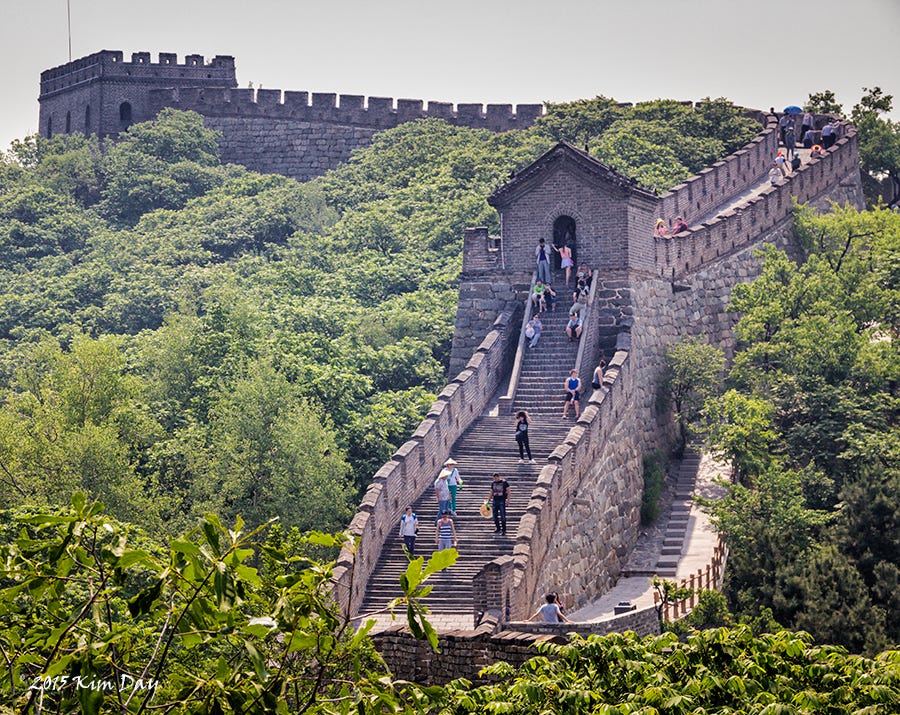The Great Wall of China is an iconic representation of human achievement and a reminder of the creativity, tenacity, and aspiration of earlier civilizations. This magnificent construction, which winds its way across the immense landscape of northern China, is more than simply a physical barrier; it’s a historical and cultural masterpiece that provides an enthralling voyage through time. We will explore the past, meaning, and breathtaking design of the Great Wall in this investigation, revealing the legends enshrined in its age-old stones.
A Spectacular Engineering Achievement
The 13,000-mile-long Great Wall is made up of several walls, fortresses, and watchtowers that have been constructed and repaired throughout the years. Contrary to popular belief, the wall is not a one continuous structure but rather is made up of distinct portions that were built during successive dynasties, reflecting the many historical eras and building methods.
The Great Wall’s construction dates back to the 7th century BC, and many dynasties contributed to its fortification and extension. The Qin Dynasty, led by Emperor Qin Shi Huang, is frequently credited with building the wall by tying together and enlarging preexisting defences. The complex network of fortifications that we see today was created by the addition of various alterations by succeeding dynasties including the Han, Ming, and Qing.
Historical Importance and Goal
The main objective of the Great Wall was defense. In order to defend China’s northern frontiers against incursions and invasions by nomadic tribes, it acted as a strategic military structure. Over the years, it expanded beyond its military function to serve as a conduit for inter-imperial trade, communication, and cultural interchange.
The significance of the wall extends beyond its actual composition. It is a symbol of the tenacity of the Chinese people, who invested a tremendous amount of time and effort in building it. The Great Wall is a physical representation of the ancient Chinese philosophy, which places an emphasis on striking a balance between harmony and protection.
A Diverse Architecture
The Great Wall’s variety of architectural styles is one of its most impressive features. The design, materials used in construction, and purposes of the various wall portions vary. While some of the portions are constructed of masonry, others use tamped soil, stones, and wood.
The watchtowers and fortifications on the wall are positioned carefully to offer vantage points for communication and monitoring. The watchtowers are not merely useful; they also exhibit exquisite architectural aspects and fortifications that reflect the period’s skill.
Maintenance and Challenges
Although the Great Wall has endured for centuries, it still faces many difficulties, such as erosion brought on by the elements, human activity, and urbanization. The wall has been the subject of continuous preservation and protection efforts, with conservation programs emphasizing both restoration and public education.
Tourists can now visit portions of the wall that have been rebuilt and made accessible to the public, like Badaling and Mutianyu, where they can take in the magnificence and historical value of this famous building. These pieces that have survived offer insights into the engineering ingenuity, architectural genius, and sheer scope of the endeavor.
Global Symbol and Cultural Impact
The Great Wall serves purposes beyond those for which it was built, and it now serves as a universal representation of the history and culture of China. It is praised for its amazing architectural accomplishment as well as its monument to the tenacity and inventiveness of people.
Since 1987, the Great Wall has been designated a UNESCO World Heritage Site, underscoring its importance on a global scale. Millions of tourists from all over the world continue to go there to take in its magnificence and its rich history.
A Tour Through Time and Civilization, Conclusion
Investigating the Great Wall of China is like diving deep into human aspiration and history. You set out on a voyage through time as you move through the many sections and try to envision the lives of individuals who helped create it. This journey exposes the fabric of civilizations, cultures, and aspirations that have created China and the rest of the world.
Beyond its actual size, the Great Wall stands for a lasting legacy of human achievement, serving as a constant reminder of the strength of collaboration, creativity, and the preservation of cultural heritage. The Great Wall of China allows you to engage with history and reflect on the extraordinary adventure that led to the building of this magnificent structure, whether you stroll along its reconstructed portions or look out at its far-off vistas.
